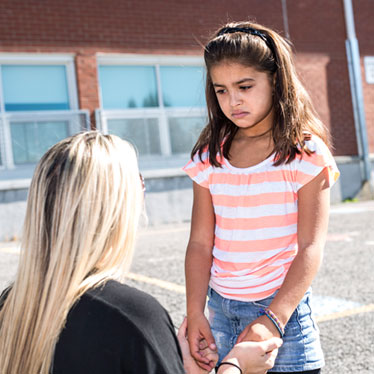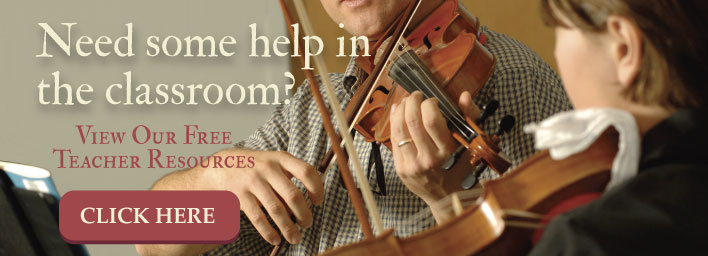How To Identify If Your Music Students Are Being Bullied And What To Do About It

As a music instructor, you have a super-power: the ability to connect and hold space with students in an exceptional way. Your regular engagement with them, via a shared interest and passion - music - allows for deeper, more personal connections than offered by more traditional teacher-student relationships. Therefore, you're in prime position to notice when a student is being bullied and do something about it.
Warning Signs Students are Being Bullied
The following are some of the most common indications of bullying. We also recommend visiting StopBullying.gov for more information. Be aware: very few students ever "tell on" the bully or ask for help. Victims tend to pull away, act like they don't care, and hide their hurt if possible. Your ability to pay attention, check-in, and take action is instrumental in stopping bullying - and taking care of students as a whole.
Pay attention in class and around the hallways
If you teach in an academic environment, pay attention in class and hallways. Odds are, you'll witness bullying in the form of comments, teasing, or physical actions or violence. While it's easy to put a stop to damaging comments, slurs or physical altercations, teachers often choose to look the other way when they observe students teasing one another or using humor as a vehicle to put one another down.
Instead, take the opportunity to explain that while jokes may seem funny to the teller and the audience, it's rarely positive for the target. Creating a culture of kindness and awareness goes a long way towards ending the small thorns or prickles that give rise to painful stings or out-and-out wounding if left untended.
Unexplained injuries, bruising, or physical damage to property
Teachers often suspect unexplained injuries or bruising are the cause of adult-inflicted child abuse. Sometimes it is – other times it's a sign of bullying. Accidents happen, and athletes experience their fair share of cuts and scrapes, but always check-in regarding anything that seems out of the ordinary. Continue checking in, even if you're brushed off, since your noticing may eventually inspire a level of trust that allows the student to confide in you.
Ripped and torn clothing (separate from current fashion trends), repeat damage or destruction to instruments and other belongings can also signal a student is bullied.
Changes in appearance, habits, or personality
Any notable changes in a student's appearance, habits or personality indicate unhappiness. Victims of repeat bullying often show signs of:
- Hunger (either skipping meals to avoid having to be around bullies or because bullies take their lunch or lunch money)
- Dark circles under their eyes due to lack of sleep and anxiety
- Anxiety, depression, or reclusiveness
- Declining grades
- Lack of interest in things they used to love and excel at
- Destructive habits, whether harming themselves or making comments about how they aren't worth anything.
- Lack of confidence and self-esteem
It can be especially tricky to determine which of the above indicate normal adolescent or teenage angst, not to mention self-exploration or rebelling, which indicate a real problem. However, it's always best to err on the side of caring and caution, checking in repeatedly with the student(s) in an unobtrusive way (i.e., not in front of others, or the class-at-large).
What to Do About It
Most schools have clear bullying protocols in place. As a teacher, you're beholden to those policies so review them and follow procedure. If there is no policy in place, speak to the administration about creating one, so there is a clear, consistent, and repeatable model instituted school-wide.
Additionally, there are things you can do:
Talk about bullying
Have a conversation at the beginning of the year, and dabbled here and there throughout the year, explaining what bullying is, how important it is to sound the alarm if students witness it, or are victims, and why bullying is so hurtful. Music students are prone to bullying as the result of their sensitive nature and a talent/interest that is outside the normal "A-Group" activities such as sports, student government, and cheerleading.
Create a no-bullying culture in your classroom
Be clear about your no-bullying policy and stick to it. Nip any bullying you witness in the bud to prove you're serious.
Bring known bullying to the attention of administration and parents
If you witness bullying, bring it to the attention of the administration immediately so they can take action. If it's more intense in nature, consider calling the parents/guardians of both the bully and the victim.
Model kindness and respect
You're an example of how to be in the world. If you model kindness, respect, and a compassionate stance, students are more apt to follow your lead.
Your ability to promote safe, inclusive classroom cultures, as well as noticing and taking action against bullying, changes students' life experience in positive, inspiring ways.


